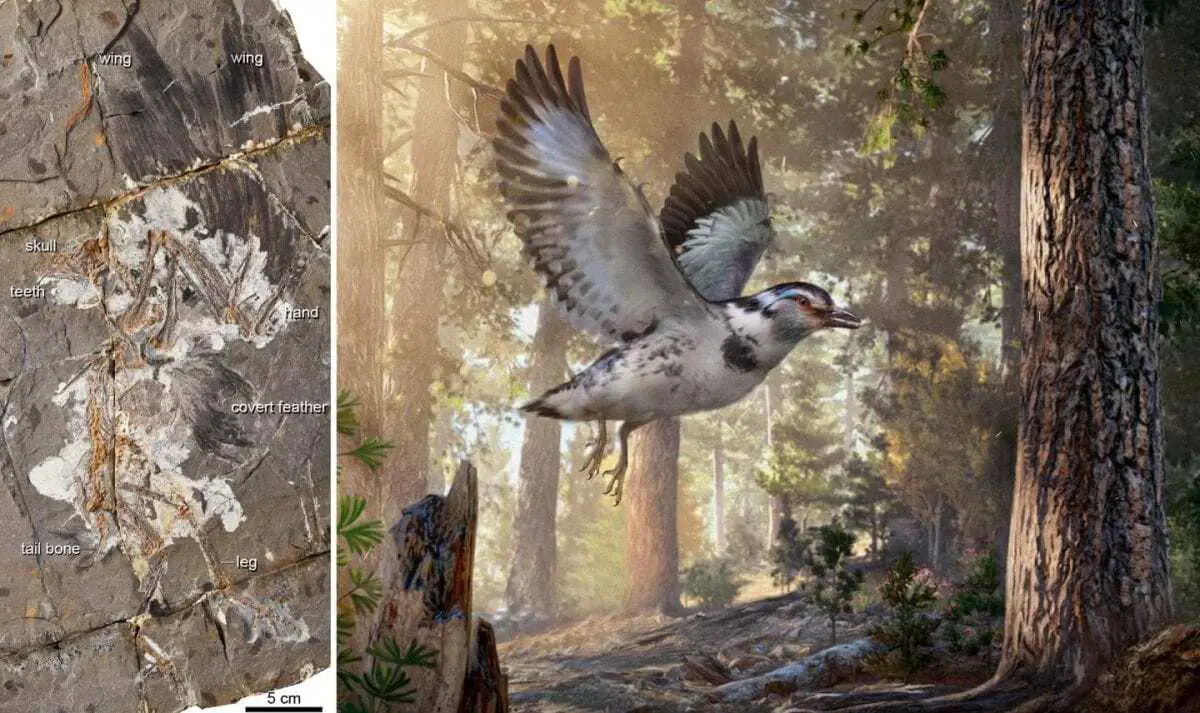A newly identified extinct bird species from a 127 million-year-old fossil deposit in northeastern China provides new information about avian development during the early evolution of flight.
Drs. WANG Min, Thomas Stidham, and ZHOU Zhonghe from the Institute of Vertebrate Paleontology and Paleoanthropology (IVPP) of the Chinese Academy of Sciences reported their study of the well-preserved complete skeleton and feathers of this early bird in the Proceedings of the National Academy of Sciences (PNAS).
The analysis of this early Cretaceous fossil shows it is from a pivotal point in the evolution of flight – after birds lost their long bony tail, but before they evolved a fan of flight feathers on their shortened tail.
The scientists named this extinct species Jinguofortis perplexus. The genus name “Jinguofortis” honors women scientists around the world. It derives from the Chinese word “jinguo,” meaning female warrior, and the Latin word “fortis” meaning brave.
Jinguofortis perplexus has a unique combination of traits, including a jaw with small teeth like its theropod dinosaur relatives; a short bony tail ending in a compound bone called a pygostyle; gizzard stones showing that it mostly ate plants; and a third finger with only two bones, unlike other early birds.
The fossil’s shoulder joint also gives clues about its flight capacity. In flying birds, the shoulder, which experiences high stress during flight, is a tight joint between unfused bones. In contrast, Jinguofortis perplexus preserves a shoulder girdle where the major bones of the shoulder, the shoulder blade (scapula) and the coracoid, are fused to one another, forming a scapulocoracoid.
The existence of a fused shoulder girdle in this short-tailed fossil suggests evolutionary variety during this stage of evolution, which probably resulted in different styles of flight. Based on its skeleton and feathers, Jinguofortis perplexus probably flew a bit differently than birds do today.
Measurement of the fossil’s wing size and estimation of its body mass show that the extinct species had a wing shape and wing loading (wing area divided by body mass) similar to living birds that need a lot of maneuverability. These traits would have helped it fly in the dense forests of northeastern China’s Cretaceous period.
CHINESE ACADEMY OF SCIENCES HEADQUARTERS
Header Image – A 127-million-year-old fossil bird, Jinguofortis perplexus (reconstruction on the right, artwork by Chung-Tat Cheung), second earliest member of the short-tailed birds Pygostylia. Credit : WANG Min





